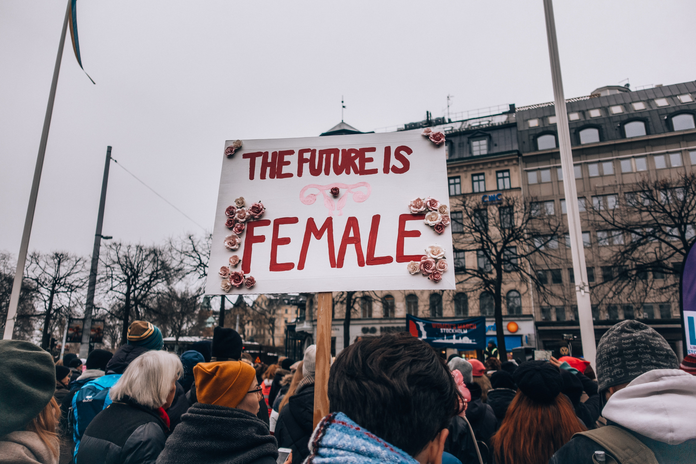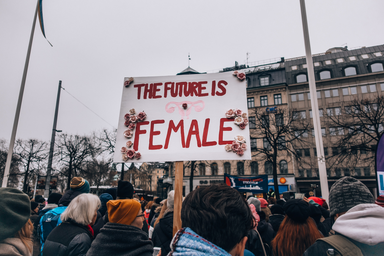In the 21st Century, technology has advanced in so many ways to make life easier for the average person. However, when looking at the seemingly ordinary products we use in our homes daily, the historical and cultural significance behind these inventions and their creators are given zero recognition. As the realm of technology and invention is still recognized in our culture as a male-dominating field, the women who have created the revolutionary appliances we use today were either overlooked or received no credit for their work, especially inventions made by Black women.
Throughout March, Women’s History Month is meant to acknowledge and honor the women who have made significant contributions in the U.S., as well as “recognize the specific achievements women have made over the course of American history in a variety of fields,” according to the official government website. For this year’s Women’s History Month, I want to highlight several revolutionary inventions made by women that have not only enhanced the quality of life for modern society but have also allowed for technological advancements to be made within their respective fields.
- The Dishwasher
-
Although many still prefer to wash their dishes by hand, being able to tuck away dirty dishware and utensils in a washer that cleans them automatically is an invention that I will forever be grateful for as a busy college student! For Josephine Cochran, washing fine china by hand was a tiresome task not only for her but for other women, as well, so she went out to design and patent a mechanism that would use wire racks and water pressure for easier and effective dishwashing.
In the mid-1800s, past attempts were made to create a machine that would wash multiple dishes at once, but these patents proved ineffective because they were not exactly practical for everyday use. Failed patents by other inventors, as well as a huge debt left from her husband’s passing, forced Cochran to go through with the development of her appliance, as she declared in 1886 that if no one else was going to create a dishwashing machine, “I’ll do it myself.” Even though opportunities to innovate were uncommon for American women of this era, Cochran was able to sell her machines to larger audiences, such as hotels and restaurants. Yet, many investors were interested in her product only if she handed over the company to the management of men and resign. Instead, she took a chance on her invention by going to the World’s Colombia Exposition and gained mass popularity and sales from Illinois restaurants and hotels. This allowed her to open up her own manufacturer in 1898 and, in 1917, she received a second, posthumous patent on her improved dishwashing machine that would later become a household staple beginning in the ‘60s.
- Windshield Wipers
-
Can you imagine having to drive during treacherous rain and other harsh weather conditions without the ability to wipe down your windows? I certainly can’t.
In the early 1900s, May Anderson designed the first windshield blade that could be controlled from inside the vehicle after observing her driver’s struggle to see through his window on a snowy day. Although she was able to get her design patented in 1903, her idea was turned down by many manufacturing firms because of a lack of demand— keep in mind, Henry Ford had not begun to even manufacturer his famous cars yet. Sadly, her patent had expired right before the boom of car sales in the 1920s, and corporations, such as Cadillac, began to adopt it as standard equipment for cars. Even though Anderson did not receive financial success for her idea, she was recognized for her invention with an induction into the National Inventors Hall of Fame in 2011. - Caller I.D. and Call Waiting
-
Thanks to Dr. Shirley Jackson, our phones can display and identify the numbers from incoming calls, as well as notify us if there’s an incoming call coming in while we’re on a different call. Meaning, no more missed phone calls!
Considered a national treasure in scientific research and education, Dr. Jackson has a significant amount of accomplishments under her belt: not only is she the first African-American woman to earn a doctorate’s degree in physics at the Massachusetts Institute of Technology (MIT), she is also the first African-American woman to “lead a top-ranked research university” as the 18th president of Rensselaer Polytechnic Institute. Additionally, former US President Barack Obama appointed Jackson as Co-Chair of the President’s Intelligence Advisory Board, where she “assessed issues about the quality, quantity, and adequacy of intelligence activities.” If you take a look at the list of honors and accolades she has received in various fields related to science, it is clear that she has been a trailblazer throughout her entire career and an inspiration to many. - Home Security Systems
-
With the many home security system options available at our fingertips, many neighborhoods across the country have been afforded a way to feel safe thanks to the work of Marie Van Bitten Brown. As a Black nurse in Jamaica, Queens of New York City, Brown often felt uneasy living alone while her husband was away for work due to the high crime rate in her neighborhood, as well as slow police response to emergency calls. As a way to feel protected, she designed a closed-circuit security system that allowed her to monitor visitors at her door from any television monitor in her home, as well as a panic button to contact police. Additionally, she envisioned that users could talk to visitors at the door through a two-way microphone and lock or unlock the door from a distance.
Her patent in 1966 inspired many modern home security systems, even though Brown did not go on to commercialize her invention. However, she did receive an award from the National Scientists Committee.
- The Modern Bra
-
As corset tops are coming back into style, you have to wonder: when did women move on from traditional corsets to the bra design that we know of today?
Corsets were traditionally made with whaleback bones and steel rods, which would poke out undergarments and, obviously, cause major discomfort. Corsets were used to narrow a women’s waist down to unnatural proportions to achieve a slim figure. However, as many women were growing tired of the torture to their midriffs caused by the undergarment, New York socialite Mary Phelps Jacobs (who later went by Caresse Crosby) designed a lighter and flexible version of the corset in 1910 and called it a “Backless Brassiere.” As new fashion trends of the time were shifting to suit the introduction of the bra design, she patented the undergarment in 1914. Although the Warner Brothers Corset Company later took over the bra patent, later on, Crosby’s invention helped women embrace a comfortable and more realistic version of their bodies than the former restrictive corset.



